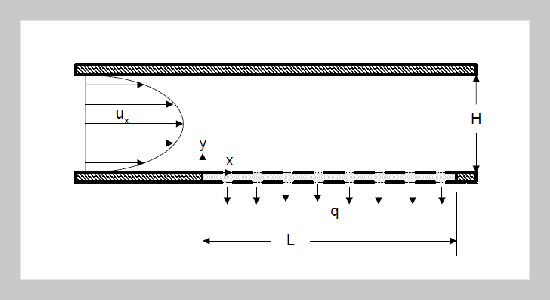Kuo-Jen Hwang1 and Yun-Sheng Wang1 1Department of Chemical Engineering Tamkang University Tamsui, Taipei, Taiwan 251, R.O.C.
Received:
January 1, 2001
Accepted:
June 27, 2001
Publication Date:
June 27, 2001
Download Citation:
||https://doi.org/10.6180/jase.2001.4.2.06
The migration and the deposition of binary submicron particles in cross-flow microfiltration are simulated in this study. The forces exerted on particles are analyzed, and the Newton’s second law of motion is integrated to simulate the velocities and displacements of particles near the membrane surface. The effects of operating conditions on the packing structure of particles and cake porosity are discussed. It can be found that the packing porosity of binary particles is smaller than those of mono-sized due to the cavern and the displacement effects. The simulated results show that looser packing for a given mixing fraction is constructed under a larger cross-flow velocity or a smaller filtration rate. The impact of the mixing fraction of binary particles is demonstrated by the experimental data of particle packing under gravity.ABSTRACT
Keywords:
Cross-Flow Microfiltration, Submicron Particles, Particle Deposition, Brownian Dynamic Simulation, Particle Packing
REFERENCES
















